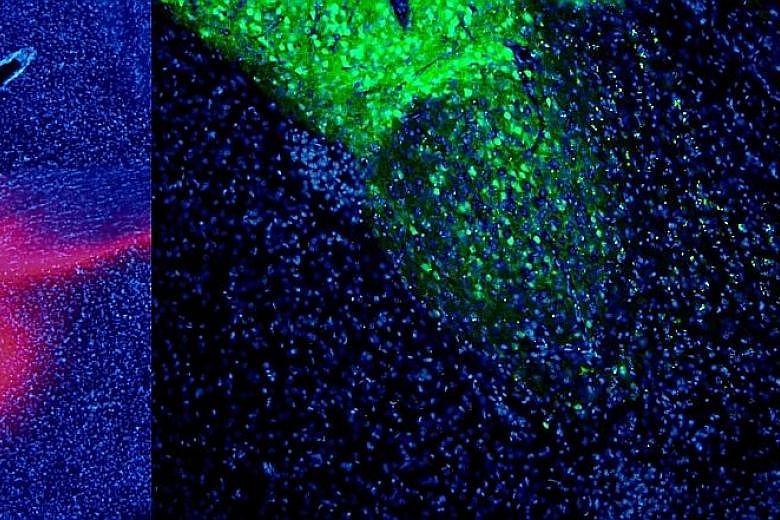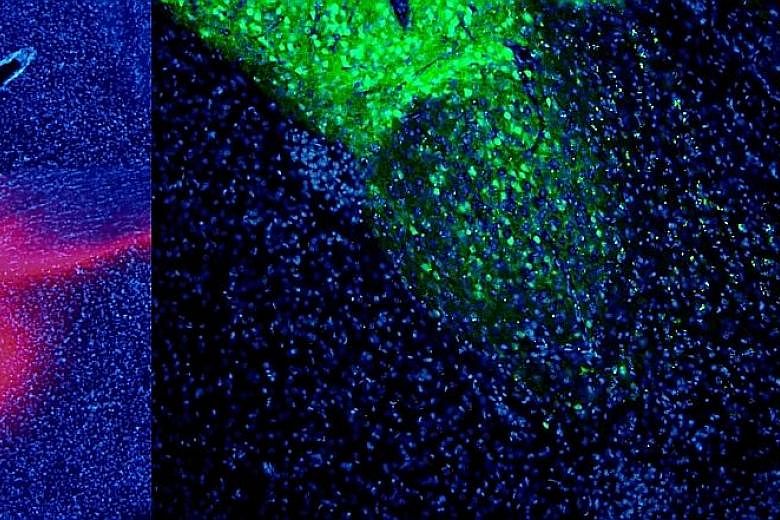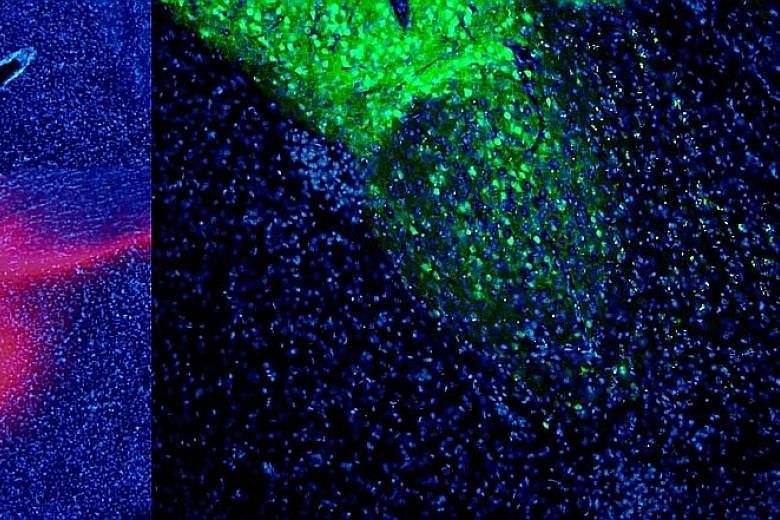This is what impulsivity looks like. Researchers from Singapore and South Korea have uncovered new details of a brain pathway that can cause impulsive behaviours. Using mice, the team led by Professor George Augustine of Nanyang Technological University's Lee Kong Chian School of Medicine found that impulsive behaviour is triggered when dopamine signals in the brain are passed to an unexpected area of it. It usually happens in behaviours like binge eating and impulsive shopping.
The researchers found that impulsive behaviour in mice is triggered when dopamine signals are passed on to what is known as the "bed nucleus of the stria terminalis" (BNST). The work done with researchers from Korea University and the Korea Institute of Science and Technology could pave the way for treatment options for neuropsychiatric disorders like bipolar and attention deficit hyperactivity disorders, and depression.
The images show the connections between the central amygdala in the brain and the BNST. (From photo 1 to photo 3) The red pigment shows neurons that innervate the bed nucleus of the stria terminalis region. The green dye shows neurons in the central amygdala that express special dopamine receptors which are important for impulsive behaviour. The last image zooms in and highlights how green neurons interact with red ones, forming the pathway that triggers impulsive behaviour.



